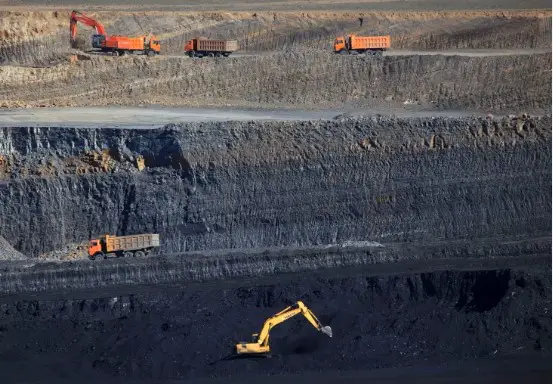Overview of the Global Coal Mining Market
Despite declining demand and increasing environmental scrutiny, the Coal Mining Market retains significance. Industry reports estimate its value at around USD 703.8 billion in 2020. Nevertheless, the market is anticipated to witness a growth decline due to factors like stricter environmental regulations, heightened competition from alternative energy sources, and reduced coal consumption in major markets.
Leading Players in the Coal Mining Industry:
The global Coal Mining Market is predominantly shaped by several multinational corporations holding substantial market shares. Key players include:
- Coal India Limited (CIL): Based in India, CIL stands as the world's largest coal producer, contributing significantly to India's coal production and addressing its energy requirements.
- China Shenhua Energy Company: This Chinese entity holds the title of the largest coal mining company in China, with extensive operations in coal mining, coal-fired power generation, railway transportation, and coal chemical industries.
- Peabody Energy Corporation: Headquartered in the United States, Peabody Energy ranks among the largest coal producers globally, with mining operations spanning regions like the Powder River Basin, Illinois Basin, and Australia.
- BHP Group: An Australian-based multinational mining company, BHP holds considerable interests in coal mining, with operations across continents such as Australia, South America, and North America.
- Glencore Plc: As a global commodities trading and mining company, Glencore operates coal mining ventures in countries like Australia, Colombia, and South Africa, supplying coal to global markets.
Analysis of Regional Market Share:
Regional coal mining market shares vary significantly due to factors like coal reserves, production capacities, governmental policies, and energy demands. Some notable insights include:
- Asia-Pacific: Dominating the global coal mining market, the Asia-Pacific region leads in both production and consumption. Major coal-producing and consuming countries like China, India, Indonesia, and Australia shape regional dynamics.
- North America: North America emerges as a significant player, with the United States and Canada possessing substantial coal reserves and production capacities. However, challenges arise from declining coal consumption and stringent environmental regulations.
- Europe: Witnessing a decline in market share due to environmental concerns and renewable energy expansion, Europe's coal mining industry is affected by countries like Germany, Poland, and the United Kingdom adopting measures to reduce coal dependency.
- Rest of the World: Other regions, including South America, Africa, and the Middle East, contribute to the global coal mining market share with varying production and consumption levels.
Factors Influencing Market Share Dynamics:
Several factors influence coal mining market share dynamics, such as technological advancements, environmental regulations, energy transitions, and economic factors. These factors collectively shape the market landscape and impact regional shares.
Conclusion:
The evolution of Coal Mining Market Share responds to shifting market dynamics, regulatory pressures, and energy transition trends. While coal retains significance as an energy source, the industry must adapt to emerging challenges and explore sustainable growth opportunities. Understanding market share dynamics is crucial for stakeholders, policymakers, and investors to navigate uncertainties and capitalize on growth prospects. By fostering innovation, sustainability, and collaboration, the coal mining industry can overcome challenges and steer the future of global energy production.





